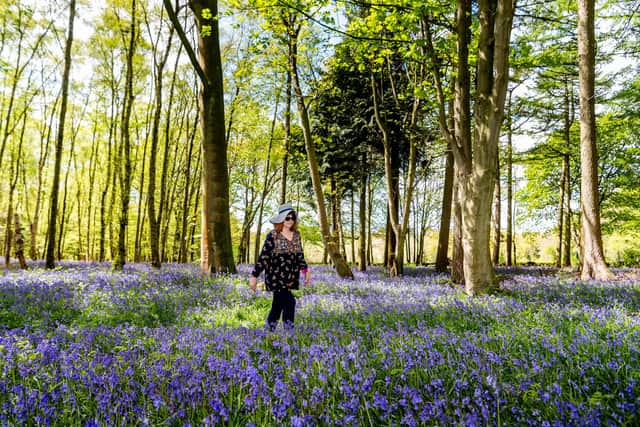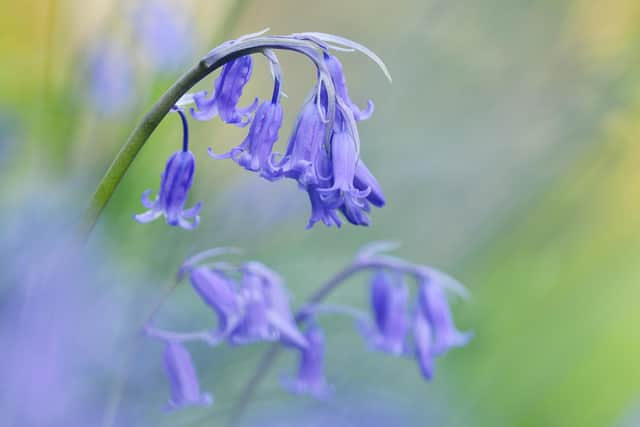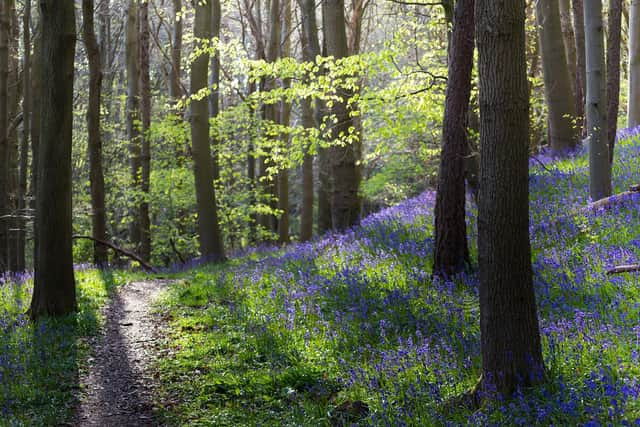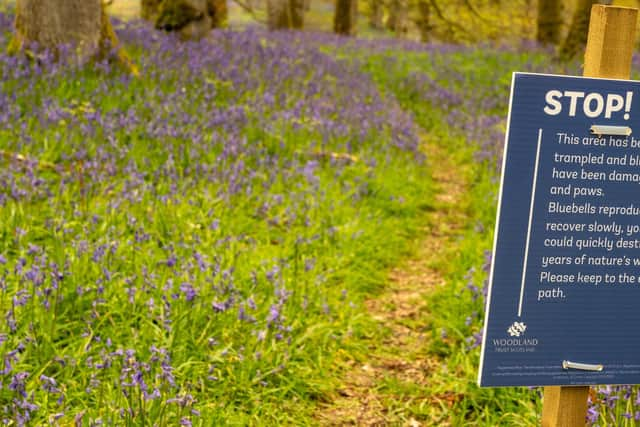Best places to see bluebells in Yorkshire this Bank Holiday Weekend
With a vivid carpet of blue now shining at its winsome best, the Woodland Trust has listed some of its best settings to see them in all their spectacular colour.
According to the trust's database, dubbed Nature's Calendar, this weekend could prove the best time yet to see the glory of bluebells in bloom.
Advertisement
Hide AdAdvertisement
Hide AdKate Lewthwaite, from the Woodland Trust, said: "Our woods are glorious at any time of year, but spring bluebells really are a crowning glory and an experience not to be missed.


“The violet glow of a bluebell site is an incredible spectacle here in the British Isles and a very precious one too – they’re often associated with ancient woodland and in combination with other species can act as an ancient woodland indicator plant.
"Hence if you spot it while out exploring, it could be a sign you are standing in a rare and special habitat."
The bluebell, with its violet glow and up-turned bell-shape tip, spends most of its time underground as a bulb and flowers from April onwards.
Advertisement
Hide AdAdvertisement
Hide AdWhile often found near hedgerows, it is within ancient woodlands that they most prosper, creating the carpet of colour synonymous with British springtime.


Already, many settings across the breadth of Yorkshire's countryside are sharing some of their bluebells, which flower often weeks sooner in the sunnier Vale of York than the slightly cooler valleys of the Yorkshire Dales.
There's Roseberry Topping, as one of the most dramatic places to spot bluebells, or Riccal Dale near Helmsley in the North York Moors. Then Garbutt Wood over Gormire Lake, Pretty Wood at Castle Howard, and the East Moor Banks.
The National Trust suggests Hardcaste Craggs, in West Yorkshire, with an “ethereal blue haze” that fills the air with their floral perfume.
Advertisement
Hide AdAdvertisement
Hide AdNow the Woodland Trust is also encouraging people to visit its settings to see the bluebells in bloom this coming weekend.


As the UK's largest woodland conservation charity there are sites across the North, including North Yorkshire's Little Swine Carr Road, Hackfall at Grewelthorpe and Nidd Gorge with Bilton Banks near Harrogate.
To Ms Lewthwaite, the bluebell in full bloom is a spectacle which is not to be missed.
“They’re also very important for wildlife too - woodland butterflies, bees and hoverflies all feed on their nectar," she said.
Advertisement
Hide AdAdvertisement
Hide Ad“If out and about this weekend though, do remember that while the bluebell is still common throughout Britain, it is under threat locally from habitat destruction, hybridisation with non-native bluebells and the illegal trade of wild-collected bulbs.


"Bluebells can take years to recover from the damage caused by trampling, and if their leaves are crushed, they can be weakened.
“So please, do get out and visit such a wonderful sight - but please admire them from the paths.”